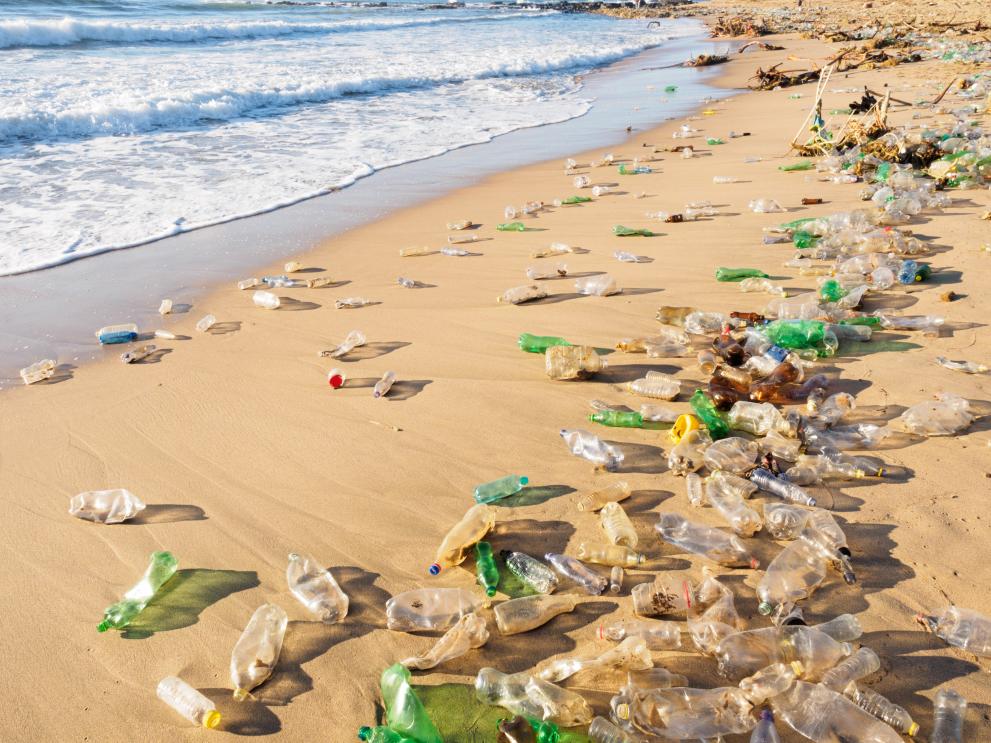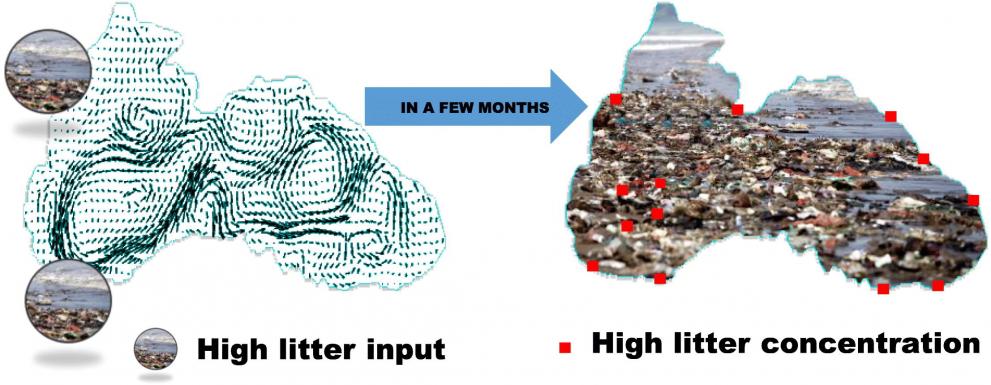
JRC scientists have developed a new hydrodynamic modelling tool to investigate the distribution and accumulation patterns of floating marine debris in the Black Sea, up to 80% of which are plastics.
The new tool, described in a recent Marine Pollution Bulletin article, combines a circulation model with a particle tracking model to locate the sources and final locations of floating litter, and identify the beaches most likely to be affected.
The south-western and the eastern coasts were identified as hotspots of litter accumulation.
The North Western Shelf, at the mouths of the Danube, Dniester and Dnieper, was found to have the greatest increasing trend in litter accumulation.

Plastic marine litter on the rise
The prevalence and negative impacts of marine litter, particularly plastics, are of growing international concern. Macro- and microplastics have been found in all marine regions of the Earth, even at the deepest point of the Earth - the Mariana Trench, at around 11,000 m depth.
Given their pervasiveness and durability, plastics pose a serious threat to natural ecosystems, food safety and quality, human health and coastal tourism, and contribute to climate change
Plastic doesn’t biodegrade, but breaks down into smaller microplastics over time. About the size of plankton, these microplastics (which may be toxic) are ingested by marine organisms and can end up in the human food chain.
Plastic pollution in the Black Sea
Marine litter is considered as a crucial and complicated environmental problem in the Black Sea basin.
Bordered by Europe, the Caucasus and Asia, the Black Sea is Europe’s most polluted sea, with almost twice as much floating marine litter as the Mediterranean.
It is particularly vulnerable to plastic pollution, because of its semi-enclosed nature, high coastal population density, intense tourism and maritime activities, and general marine circulation patterns.
The Black Sea is also a unique ecosystem. Low species diversity combined with high habitat diversity in the region create a rather sensitive and potentially unstable functioning ecosystem. The few indigenous species are coming increasingly under threat due to marine litter pollution.
However, little is known about the spatial distribution of marine litter across the Black Sea basin and its coasts.
Main new results
Surprisingly, it was found that where litter finally ends up is nearly independent of the original source of the litter. Persistent accumulation zones were found along the south-western coast and in the south-eastern Black Sea. In summer, floating plastics accumulate mostly in the western gyre, whereas in winter accumulation zones tend to move northwards.
In contrast to the short beaching time found for the Mediterranean Sea, the typical beaching time of plastic particles in the Black Sea is more than half a year.
The modelling results are supported by data from open sea litter surveys (EMBLAS project) and beach litter observations that show larger amounts of debris in different areas of the southern Black Sea coast.
Predicting future distribution patterns
By coupling future scenarios about hydrodynamic changes with the particle tracking modules, this model could help project potential accumulation regions and periods, and understand whether or not they are likely to change in the future.
Such future scenario simulations, together with different management options (e.g. waste management or plastic use) could provide valuable information to stakeholders in their efforts to preserve the Good Environmental Status (GES) of European waters, as sought by the Marine Strategy Framework Directive of the European Commission.
Further information
- Identifying distribution and accumulation patterns of floating marine debris in the Black Sea
- EMBLAS – Environmental Modelling in the Black Sea
- Survey from EU project reveals Black Sea twice as polluted by Marine Litter as Mediterranean Sea
- Marine Strategy Framework Directive (MSFD, 2008/56/EC)
- Climate change alters pathways of river-borne contaminants in the Black Sea
Related Content
Identifying distribution and accumulation patterns of floating marine debris in the Black Sea
EMBLAS – Environmental Modelling in the Black Sea
Survey from EU project reveals Black Sea twice as polluted by Marine Litter as Mediterranean Sea
Marine Strategy Framework Directive (MSFD, 2008/56/EC)
Climate change alters pathways of river-borne contaminants in the Black Sea
Details
- Publication date
- 7 April 2020
